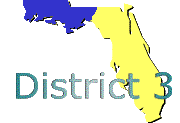| 1.0 | TRAVEL AND TRAFFIC MANAGEMENT |
| 1.1.0 | ITS shall provide a Pre-Trip Travel Information (PTTI) capability. to assist travelers in making mode choices, travel time estimates, and route decisions prior to trip departure. It consists of four major functions, which are, (1) Available Services Information, (2) Current Situation Information, (3) Trip Planning Service, and (4) User Access. Information is integrated from various transportation modes and presented to the user for decision making. |
| 1.1.3 | PTTI shall include a trip planning service. |
| 1.1.3.2 | PTTI shall provide the capability for users to specify those transportation parameters that are unique to their individual needs. |
| 1.1.3.2.1 | PTTI shall provide the capability for users to specify a desired destination. |
| 1.1.3.2.10 | PTTI shall provide the capability for users to specify their preferred weather conditions. |
| 1.1.3.2.2 | PTTI shall provide the capability for users to specify a planned departure location. |
| 1.1.3.2.3 | PTTI shall provide the capability for users to specify their desired departure time. |
| 1.1.3.2.4 | PTTI shall provide the capability for users to specify their desired arrival time. |
| 1.1.3.2.5 | PTTI shall provide the capability for users to specify their maximum acceptable travel time. |
| 1.1.3.2.6 | PTTI shall provide the capability for users to specify their maximum acceptable number of mode changes. |
| 1.1.3.2.7 | PTTI shall provide the capability for users to specify a maximum number of transfers. |
| 1.1.3.2.8 | PTTI shall provide the capability for users to specify their preferred route(s) or segment of route(s). |
| 1.1.3.2.9 | PTTI shall provide the capability for users to specify their preferred transportation mode(s). |
| 1.4.0 | ITS shall include a Ride Matching and Reservation (RMR) function. Ride Matching and Reservation will provide travel users with information on rideshare providers. Three major functions are provided which are (1) Rider Request, (2) Transportation Provider Services, and (3) Information Processing. This will also include a billing service to the providers. |
| 1.4.1 | RMR shall include a Rider Request capability. |
| 1.4.1.1 | Rider Request shall provide the capability for a traveler to request a ride by placing a single request from a facility to include, but not be limited to, the following: |
| 1.4.1.1(a) | Telephones (including hearing-impaired capability). |
| 1.4.1.1(b) | Kiosks. |
| 1.4.1.2 | Rider Request shall provide a traveler the capability to request a specific itinerary by specifying, but not be limited to, the following: |
| 1.4.1.3 | Based on the traveler's request and specified itinerary, Rider Request shall provide the traveler with the available ridesharing options. |
| 1.4.1.4 | Rider Request shall also include the capability to perform real-time ridematching by instantly matching rider and driver. |
| 1.5 | TRAVELER SERVICES INFORMATION |
| 1.5.2 | TSI shall include an Information Access function that allows travelers to access the available information. |
| 1.5.2.5 | Information Access shall provide the capability for travelers to access the TSI information via any of, but not limited to, the following methods: |
| 1.5.2.5(f) | Public area kiosks. |
| 1.5.2.6 | Information Access shall provide the capability for travelers to access TSI information from public kiosk locations which include, but are not limited to: |
| 1.5.2.6(b) | Activity centers. |
| 1.5.2.6(c) | Tourist attractions. |
| 1.5.2.6(d) | Service plazas. |
| 1.5.2.6(e) | Airports. |
| 1.7.0 | ITS shall include an Incident Management (IM) function. Incident Management will identify incidents, formulate response actions, and support initiation and ongoing coordination of those response actions. Six major functions are provided which are (1) Scheduled Planned Incidents, (2) Identify Incidents, (3) Formulate response Actions, (4) Support Coordinated Implementation of Response Actions, (5) Support Initialization of Response to Actions, and (6) Predict Hazardous Conditions. |
| 1.7.1 | Incident Management shall provide an incident identification function to identify incidents. |
| 1.7.1.2 | The incident identification function shall include the capability to identify existing (both planned and unplanned) incidents. |
| 1.7.1.2.1 | The incident identification function shall use information from the following types of sources, where available, to identify existing incidents: |
| 2.0 | PUBLIC TRANSPORTATION MANAGEMENT |
| 2.1.0 | ITS shall include a Public Transportation Management (PTM) function. |
| 2.1.4 | PTM shall include a Communications function. |
| 2.1.4.3 | OVF Communications shall provide the capability to send information from individual facilities to a central facility for processing and analysis. |
| 2.1.4.4 | As support for responding to the detection of an on-board emergency, the OVF Communications shall provide dispatchers with the capability to inform the following: |
| 2.3.0 | ITS shall include a Personalized Public Transit (PPT) function. |
| 2.3.1 | The PPT shall include a Rider Request function. |
| 2.4.1 | PTS shall include specific Secure Areas. |
| 2.4.1.2 | All Secure Areas shall have traveler activated alarms. |
| | |




